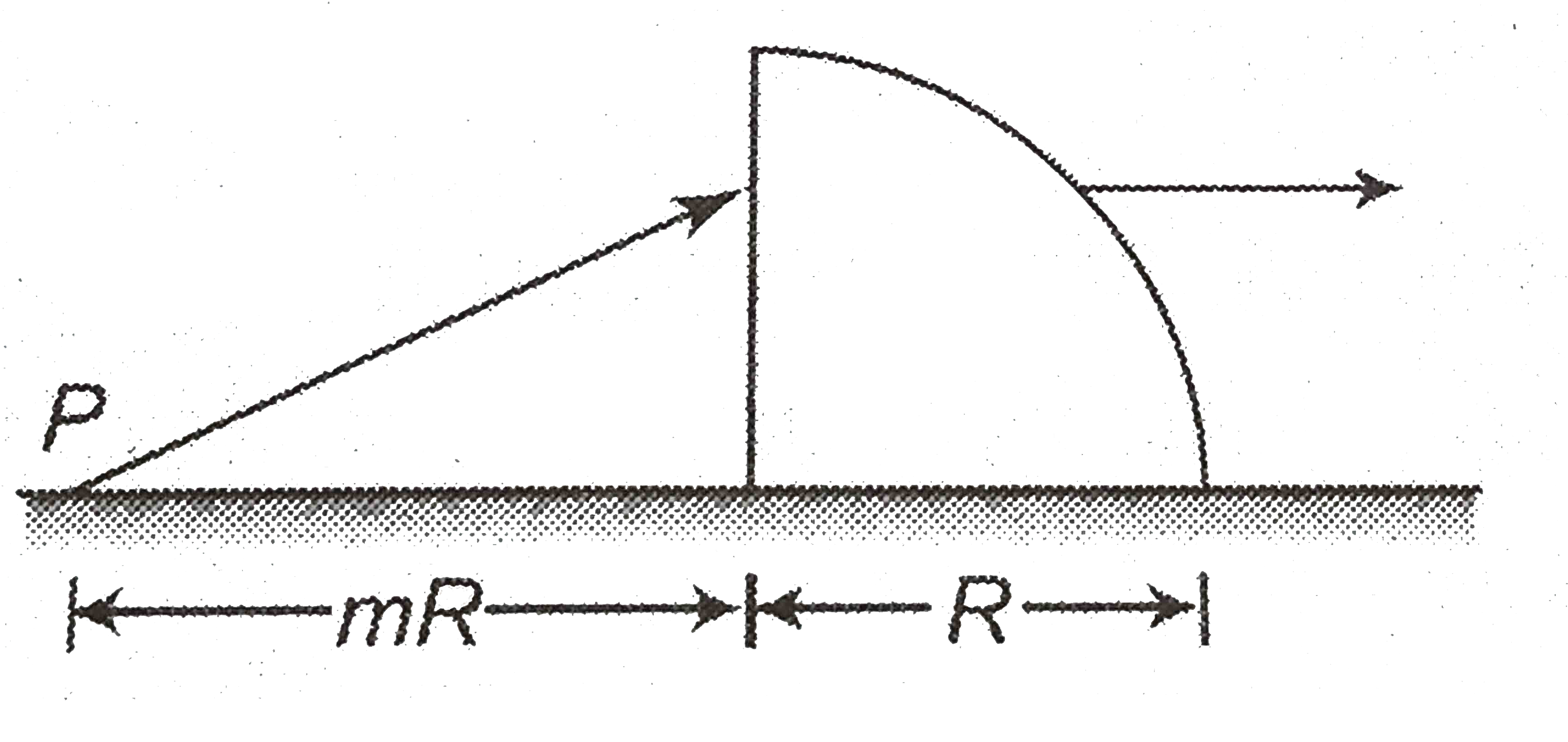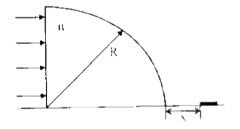
A quarter cylinder of radius R and refractive index 1.5 is placed on a table.A point object P is kept at a distance of mR from it. Find the value of m for whicha ray from P will emerge parallel to the table as shown in the figure.Solution in Gujrati
The correct Answer is:4/3
Applying μ2v−μ1u=μ2−μ1R
First on plane surface
1.5Al1−1−mR=1.5−1∞=0
∴Al1=−(1.5mR)
Then on curved surface
1∞−1.5−(1.5mR+R)=1−1.5−R
[v=∞ because final image is at infinity]
⇒1.5(1.5m+1)R=0.5R
⇒3=1.5m+1⇒32m=2⇒m=43
Topper's Solved these Questions
Similar Questions
An optical component and an object S placed along its optic axis are given in Column I . The distance between the object and the component can be varied. The properties of images are given in Column II . Match all the properties of images from Column II with appropriate components given in Column I.
_E01_239_Q01.png)
View SolutionIn the Bohr's model of hy drogen atom, the electron moves around the nucleus in a circular orbit of radius 5×10−11m. Its time period is 1.5×10−16s. The current associated with the electron motion is:-
View SolutionAssertion : The difference in the value of acceleration due to gravity at pole and equator is proportional to square of angular velocity of earth.
Reason : the value of acceleration due to gravity is minimum at the equator and maximum at the pole.
View SolutionA point object is placed at the centre of a glass sphere of radius 6cm and refractive index 1.5. The distance of virtual image from the surface is
View SolutionFind the distance of object placed in the slab of refractive index mu from point P of the curved surface of radius R so that image is formed at infinity:
View SolutionA point object is placed at the center of a glass sphere of radius 6cm and refractive index 1.5. The distance of virtual image from the surface is
View SolutionA uniform,horizontal beam of light is incident upon a quarter cylinder of radiusR=5cm and has a refractive index 2/√3.A patch on the table for a distance 'x'from the cylinder is unilluminated ,find the value of 'x'?

View Solution
An object O is stuck on the surface of a transparent solid spher of radius 20 cm. Find refractive index of the sphere such that rays from the object after refraction from the opposite side emerge as a parallel beam, as shown Also prove that refractive index has the same value in the given situation for any value of radius of sphere.
View Solution
A quarter cylinder of radius R and refractive index 1.5 is placed on a table.A point object P is kept at a distance of mR from it. Find the value of m for whicha ray from P will emerge parallel to the table as shown in the figure.
View SolutionA hemishperical surface of radius R and refractive index mu = 1.5 is polished as shown. At what distance x from point P a point object O be placed so that its image coincides with the object itself?
View Solutionअपवर्तनांक 1.5 तथा त्रिज्या R के एक सिलिंडर का चतुर्थांश मेज पर रखा गया है | इसमें mR दूरी पर एक बिंदु - वस्तु P रखी गई है | m का वह मान ज्ञात कीजिए जिसके लिए बिंदु P से चलने वाली किरण मेज के समान्तर चित्रानुसार पारगमित हो जाए |

View Solution
A parallel beam of light is incident on a glass prism in the shape of a quarter cylinder of radius R=0.5 m and refractive index n 1.5 placed on a horizontal table as shown in the figure. Beyond the cylinder a patch of light is found whose nearest distance x from the cylinder is
View SolutionAn R radius and a quarter cylinder of refractive index 1.5 is placed on a table. A point object P is placed m away from it. Find the value of m for which a ray from P will be parallel to the table according to the picture.
View SolutionFind the distance of object placed in the slab of refractive index μ from point P of the curved surface of radius R so that image is formed at infinity :

View SolutionA hemishperical surface of radius R and refractive index μ=1.5 is polished as shown. At what distance x from point P a point object O be placed so that its image coincides with the object itself?

View SolutionFind the distance of object placed in the slab of refractive index μ from point P of the curved surface of radius R so that image is formed at infinity:

View Solution
